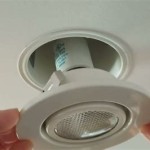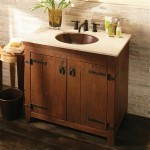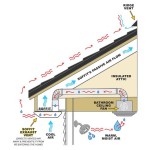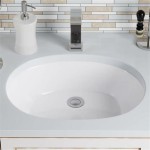Can I Paint Over My Bathroom Cabinets?
Bathroom cabinets endure significant wear and tear due to constant exposure to humidity, temperature fluctuations, and daily use. Over time, their finish can become dull, chipped, or outdated. Painting offers a cost-effective way to revitalize these cabinets and update the entire bathroom's aesthetic. However, the process requires careful consideration and proper preparation to ensure a durable and attractive finish.
Assessing Cabinet Suitability
Not all bathroom cabinets are ideal candidates for painting. Solid wood cabinets are generally excellent choices, as their surface readily accepts paint. However, cabinets constructed from particleboard or MDF with a veneer present a greater challenge. The veneer can peel or bubble if not properly prepared, and the underlying material may absorb moisture, leading to warping or damage. Examining the current finish is also crucial. Cabinets with a glossy, lacquered finish require more extensive preparation, including sanding or deglossing, to ensure proper paint adhesion.
Essential Materials and Tools
A successful cabinet painting project hinges on having the right tools and materials. These include high-quality primer designed for adhesion to the cabinet material, a durable paint formulated for high-moisture environments, and appropriate brushes and rollers for smooth application. Protective gear, such as gloves and a respirator mask, are essential for safety. Other necessary materials include sandpaper, painter's tape, drop cloths, cleaning solutions, and a putty knife for filling any imperfections.
Preparing the Cabinets
Thorough preparation is the most critical step in achieving a professional-looking finish. This process begins with removing the cabinet doors and hardware. Cleaning the cabinet surfaces with a degreasing solution removes dirt, grime, and any residue that could interfere with paint adhesion. For glossy surfaces, sanding or applying a deglossing agent is necessary to create a suitable surface for priming. Any imperfections, such as dents or scratches, should be filled with wood putty and sanded smooth.
Priming for Optimal Adhesion
Primer serves as a crucial intermediary layer between the existing cabinet finish and the new paint. It promotes adhesion, seals the surface, and provides a uniform base for the topcoat. Choosing a primer specifically designed for the cabinet material, whether wood or laminate, is essential. Applying a thin, even coat of primer and allowing it to dry completely according to the manufacturer's instructions ensures optimal performance.
Selecting the Right Paint
Choosing the right paint is paramount for a durable and aesthetically pleasing finish. Opt for a high-quality paint formulated to withstand the humidity and temperature fluctuations common in bathrooms. Semi-gloss or satin finishes are popular choices as they are easy to clean and resist moisture. Consider the overall bathroom design when selecting a color. Testing paint samples on a small, inconspicuous area can help determine the final color choice.
Painting Techniques for a Smooth Finish
Applying the paint in thin, even coats is key to achieving a smooth and professional finish. Using high-quality brushes and rollers designed for the chosen paint type helps prevent brush strokes and ensures even coverage. Allowing each coat to dry completely before applying the next minimizes the risk of drips and runs. For cabinet doors, painting the recessed panels first, followed by the frames, provides a more efficient and even application.
Reassembly and Finishing Touches
Once the final coat of paint has dried thoroughly, the cabinet doors and hardware can be reattached. New hardware can significantly update the look of the cabinets. Carefully reinstalling the doors and hardware ensures proper alignment and function. Inspecting the finished product for any imperfections and touching up as needed completes the transformation.
Maintaining Your Painted Cabinets
Proper maintenance helps preserve the newly painted finish and extend the life of the cabinets. Regularly cleaning the surfaces with a mild cleaner and a soft cloth prevents the buildup of grime and residue. Avoid using abrasive cleaners or scouring pads, as these can damage the paint. Addressing any chips or scratches promptly prevents further damage and maintains the overall appearance.
Alternative Refinishing Options
While painting is a popular choice for refinishing bathroom cabinets, other options exist. Re-staining can enhance the natural beauty of wood cabinets and provide a classic look. Refacing involves replacing the cabinet doors and drawer fronts while leaving the existing cabinet boxes in place, offering a more substantial update without a full remodel. These alternatives can be considered based on budget, desired aesthetic, and the condition of the existing cabinets.

How To Paint Bathroom Cabinets Without Sanding 8 Vital Steps Grace In My Space

How To Paint Laminate Cabinets Love Renovations

How To Paint A Bathroom Vanity Love Remodeled

How To Paint Bathroom Cabinets Without Sanding 8 Vital Steps Grace In My Space

Bathroom Vanity Makeover With Chalk Paint Decor Adventures

Chalk Painted Bathroom Vanity Makeover Our Storied Home

How To Paint Bathroom Cabinets Diyer S Guide Bob Vila

How To Paint Oak Cabinets

Painting Bathroom Cabinets Nq Property Care

Painting Bathroom Cabinets A Beginner S Guide Chrissy Marie Blog
Related Posts







